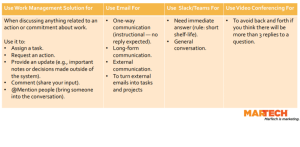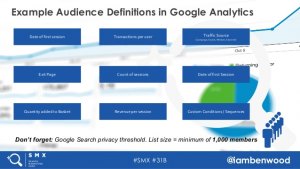How do you achieve higher yield in programmatic? Columnist Rob Rasko digs deep into two “non-secrets” to bring you programmatic wisdom.
“No. Try not. Do … or do not. There is no try.” -Yoda
As more publishers adopt programmatic best practices and become aces in optimization, we’ve discovered that there are no longer hidden secrets towards achieving higher CPMs. The major unknowns of programmatic buying and selling have been worked out — all that is left to do is the work.
In order to illustrate the point, let’s frame the conversation around a typical use case. Today, many publishers are selling marquee sponsorships at a double-digit CPM; they sell their direct sold campaigns at a reasonable percentage down from that price, and programmatic direct at a percentage lower.
However, when they look at their overall programmatic clearing prices in the entire waterfall, the net is a significant discount to the premium rates. Think $30, $20 and $10 and a programmatic total of $4, for example.
How do we achieve higher-priced deals in a premium programmatic and in the overall automated side of the house?
Let me dive into two non-secrets or known concepts that can lead us to an answer. Higher yield in programmatic is possible if you have the resources and conviction to do the work which includes:
- Adopting a “real-time pricing” strategy, also known as “unified deals” or “dynamic allocation.”
- Crafting partnerships with brand marketers buying in programmatic.
“Decide You Must, How To Serve Them Best”
As a refresher, real-time pricing, unified deals and dynamic allocation refer to the concept of running an internal auction for all of your impressions, forcing your internal sales team to compete with programmatic buyers on a bid-by-bid basis.
In today’s programmatic environment, much of the revenue is generated from direct response advertisers who look to receive ROI from every impression. The real brand marketers who can pay high CPMs are most interested in high impact units, brand adjacency and context, and are currently not capable of transacting in programmatic — or at least not yet.
To dig a little deeper into this concept, I asked Tom Shields, SVP of Strategy for the Publishers unit at AppNexus, and Rich Zeroth, director of Programmatic Operations at Meredith, to comment, and here is what I learned.
In general, Shields agreed with my overall thesis. However, he mentioned the critical aspects of an effective programmatic stack setup:
- Make sure all of your pipes in place are open — the performance channel, the auction channel, and the audience channel. In order to receive the demand, you must set up all the pipes.
- Pick an ad management platform that helps you reach the most demand sources.
- Make sure the path to access the demand is the shortest and most efficient it can be. You want as few intermediaries between you and the demand as possible.
- Spend time working the proper allocation between your direct and indirect inventory.
- And lastly, we arrive at unified deals. Shields and AppNexus are strong proponents of making all your supply compete in an auction for your demand versus the waterfall, but your tech stack must enable this to happen. A major requirement here is to get as much of your supply in one system as possible.
“You Will Find Only What You Bring In”
In order to get a different perspective, I spoke with Zeroth of publisher giant Meredith.
Interestingly, Zeroth explained that a third to 40% of Meredith’s programmatic revenue comes from the private marketplaces, accounting for approximately 10% of programmatic impression monetization. He pointed out that Meredith’s success is not just about pushing any buttons — it’s about doing the work, planning, testing, and having the tech stack set up based on methods proven following significant testing and learning.
One specific point of differentiation is that Meredith gives ad stack prioritization to PMP deals from its largest clients within its waterfall. Their reason, as Zeroth pointed out, is that they have learned that programmatic buyers value early session impressions more than standard direct line items. In our chat, Zeroth mentioned that initially this concept was a tough sell, but it has proven to be a valuable choice for both Meredith’s relationships and its bottom line.
Another tactic that Meredith employs includes offering full bid price transparency to its PMP clients versus limited transparency in the open exchange. Meredith also avoids subscribing to the “set it and forget it” method of managing deals and works closely with its buyers to understand clearing prices and where to bid. This ensures that as the inventory fluctuates, the prices to keep delivery right are communicated.
As a followup question, I asked Zeroth if buyers are ready to handle this discussion. He explained that “if 100% of the buyers were ready to handle all of our bid guidance, we would have to staff up our resources, so no, we are not, but we are hopeful as without a doubt both sides would have effective results.”
So what is the barrier? According to Zeroth and many others whom I have talked to, it is a lack of human resources.
Another roadblock: the evolution (or lack thereof) of technology. “There have been multiple cases where in branding campaigns, the bidder cannot make the spend happen due to the direct response nature of the technology,” he said. “‘Spend at all costs’ does not exist, signaling a lack of resources at the brand level and a need for technology to evolve.”
It’s interesting as we think about the current landscape — although publishers and ad exchanges exist in different parts of the digital ecosystem, they both acknowledge that there is work to be done.
Some opinions expressed in this article may be those of a guest author and not necessarily Marketing Land. Staff authors are listed here.
(Some images used under license from Shutterstock.com.)
Marketing Land – Internet Marketing News, Strategies & Tips
(189)
Report Post






